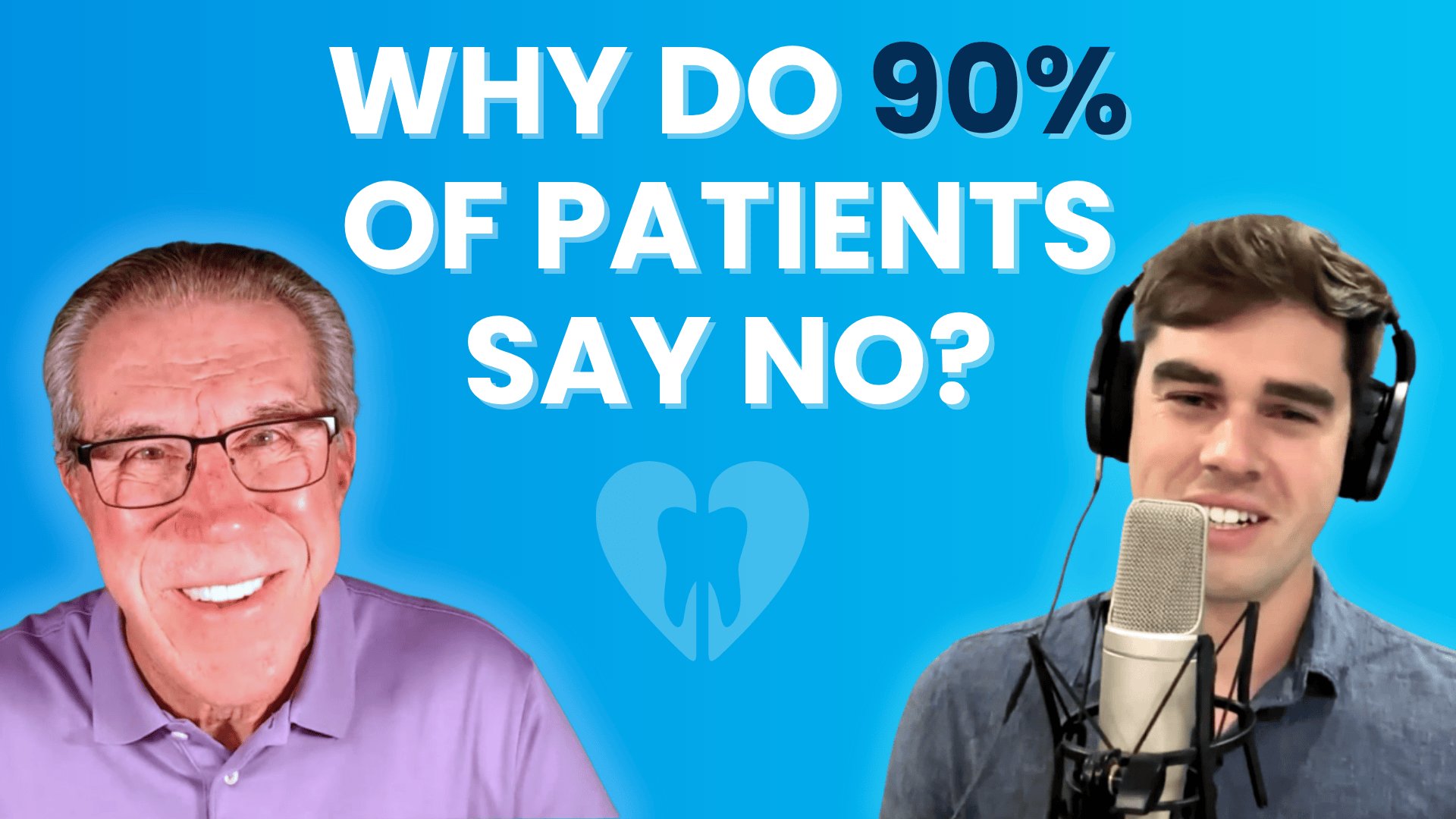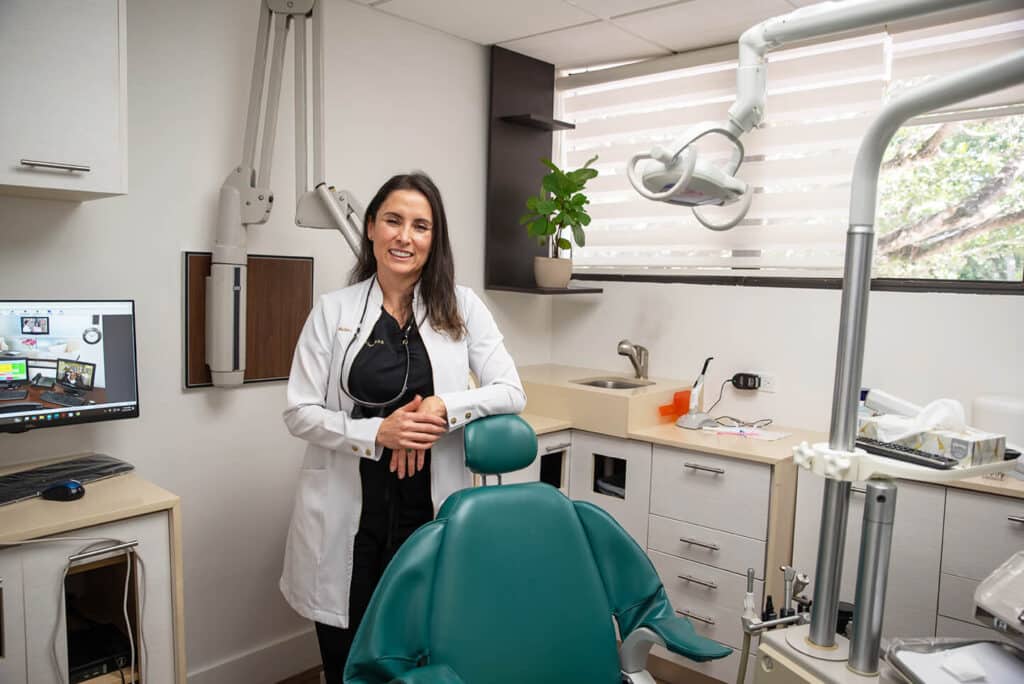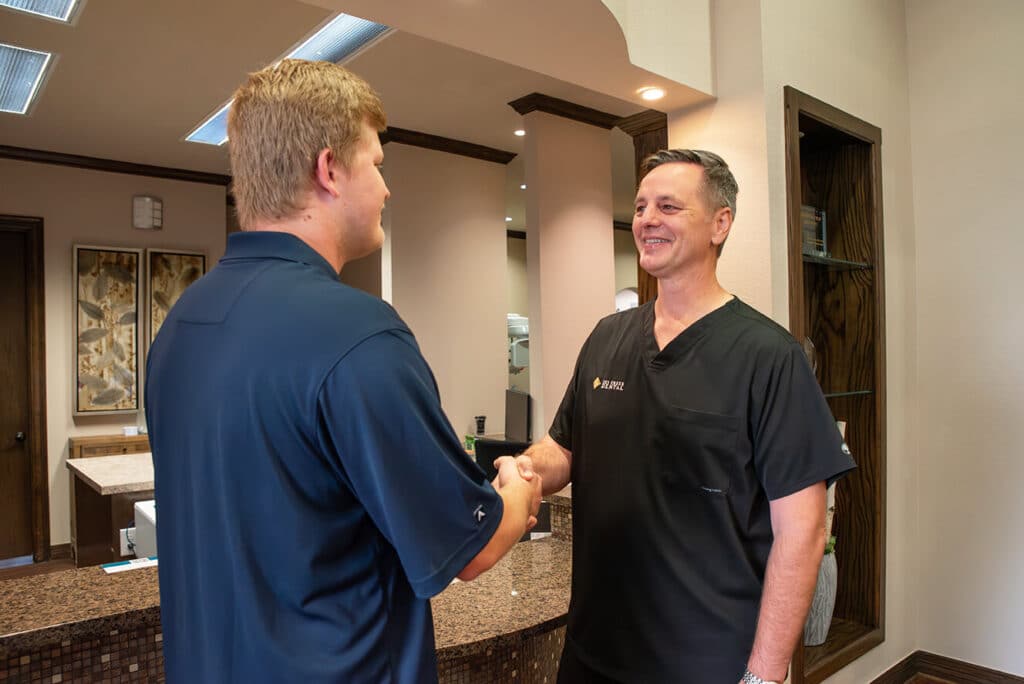Increase Dental Case Acceptance Rate: Understanding The Why
In dentistry, it’s easy to fall into the trap of leading with clinical expertise. After all, that’s what dental school taught—diagnose, explain, educate. However, this approach often leads to frustration, ghosting, and low case acceptance when it comes to larger treatment cases, particularly those in the $10,000+ range. Why? Because patients aren’t dentists. They’re people […]

In dentistry, it’s easy to fall into the trap of leading with clinical expertise. After all, that’s what dental school taught—diagnose, explain, educate. However, this approach often leads to frustration, ghosting, and low case acceptance when it comes to larger treatment cases, particularly those in the $10,000+ range. Why? Because patients aren’t dentists. They’re people with real lives, real worries, and very real reasons for seeking care, far beyond pocket depths and bone levels.
In a recent episode of Bite-Size Dental Marketing, we had the pleasure of sitting down with Dr. Paul Homoly, a pioneer in the art and psychology of patient communication. His message? Dentists need to stop trying to convince and start learning how to understand. You can watch the full episode here:
Stop Talking at Patients. Start Listening to Them.
“Patient education is highly overrated when it comes to the high-fee cases,” says Dr. Homoly. “You don’t need to tell them their teeth are missing or look terrible. They already know.”
The problem isn’t that patients don’t understand their dental condition. The problem is that dentists often skip the emotional context of why patients want their teeth fixed in the first place. They try to teach when they should be listening. They explain procedures when they should be uncovering motivations.
Dr. Homoly, who has worked with dentists nationwide, says, “We don’t educate people into being comfortable. The only way we can get people to be comfortable is to give them a sense that we understand them.”
The Four Chiefs: A Framework for Deeper Conversations
To help dentists navigate these deeper conversations, Dr. Homoly introduces the concept of the Four Chiefs—a powerful framework to guide new patient interviews and unlock the true motivators behind treatment acceptance. Here’s how it works:
Chief Condition: This is what most dentists are already trained to spot—the clinical issue. It’s the broken tooth, the missing molar, the deteriorating bridge. This is what most dentists lead with, which is absolutely necessary, but should not be the only focus for high-fee cases.
Chief Disability: This is where it gets emotional. The chief disability is the way that condition affects the patient’s daily life—embarrassment at work, hiding their smile in photos, avoiding social situations. “The disability is never in the mouth,” Dr. Homoly explains. “It’s in the patient’s lifestyle.”
Chief Benefit: This is not to be confused with clinical benefits; it is the lifestyle improvement the patient hopes for. Confidence. Better speech. Freedom from pain. The chief benefit is the opposite of the disability, and it’s what they’re really buying. Ask yourself, How will this treatment change their life?, What real-life benefits will they gain from accepting this treatment?
Chief Fit Issue: This is everything standing in the way of treatment: time, money, family, health, and travel. Understanding these barriers is crucial, especially with older or more complex patients whose lives may be full of competing demands. If you can understand why it is not a fit right now, you can offer a solution to the issue that is currently in the way of them accepting treatment.

It’s Not Your Job to Sell. It’s Your Job to Understand
One of the simplest but most powerful tools a dentist can use is a question: “Why now?” If a patient hasn’t been to the dentist in 2, 5, or even 10 years—why are they showing up today? What’s going on in their life that made dental care a priority? As a dentist, you need to understand this! Maybe it’s a wedding. Maybe it’s a job interview. Maybe it’s just that they’re tired of hiding their smile.
Whatever the answer, it tells you everything you need to know about framing your recommendations in a way that aligns with their real motivation—not just your treatment plan.
Start Your Next Case Presentation with Empathy
Understanding your patients doesn’t mean abandoning clinical excellence. It means elevating it—by making your expertise relevant to what really matters to them. That’s the key to high-fee case acceptance. Here’s how you can take the first steps:
- Understand their why. Ask a patient, “Why now,” and listen.
- Connect treatment to lifestyle. Why does it matter to them?
- Stop selling—start offering. Relate it to “Here’s how we can solve this”.
Because, as Dr. Homoly reminds us, “It’s not your role to convince. It’s your role to understand.”

Final Thoughts
If there’s one takeaway from Dr. Homoly’s message, it’s this: the path to higher case acceptance doesn’t run through better explanations—it runs through deeper understanding. When you shift your focus from presenting treatment to understanding people, you not only build trust, you build a practice that patients actually want to return to. So the next time you sit down with a patient, don’t just ask what’s wrong—ask why now. Their answer might change everything.
Of course, getting patients to say yes starts with understanding their “why”—but before that, they need to walk through your door. And that begins with the right message. That’s where dental marketing comes in. At Pain-Free Dental Marketing, we don’t believe in cookie-cutter campaigns. Just like Dr. Homoly teaches dentists to understand their patients, we take the time to understand your why—why you opened your practice, why you want to grow, and why your patients choose you. When your marketing speaks to the heart of what matters, the right patients start listening and showing up.